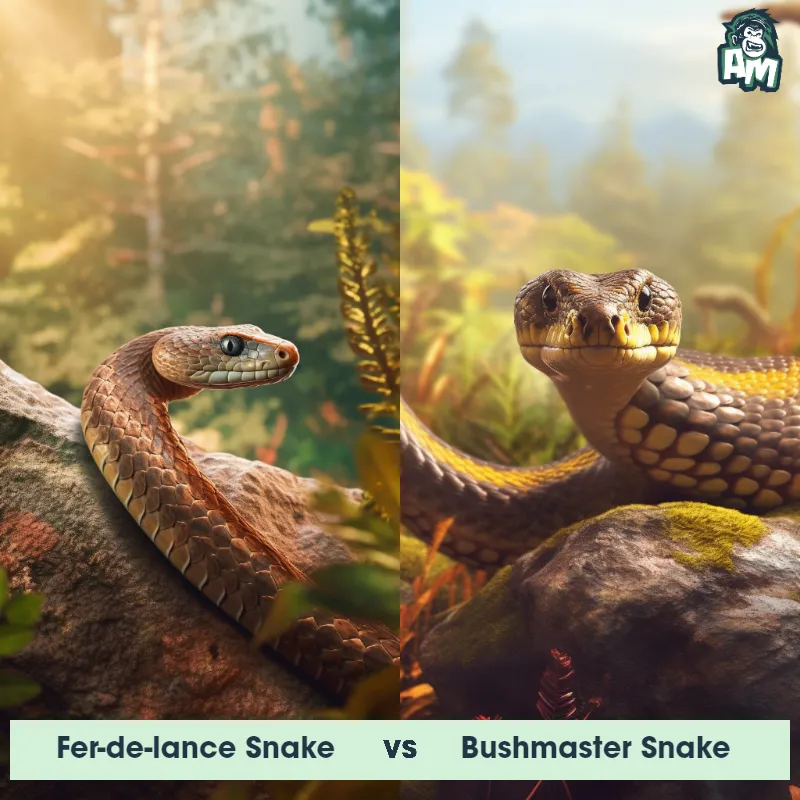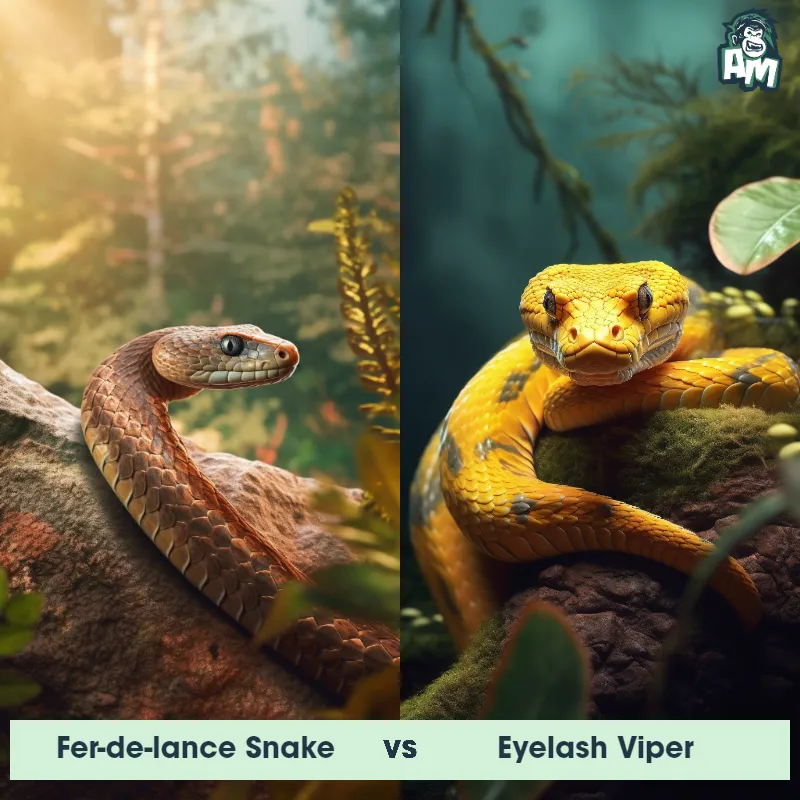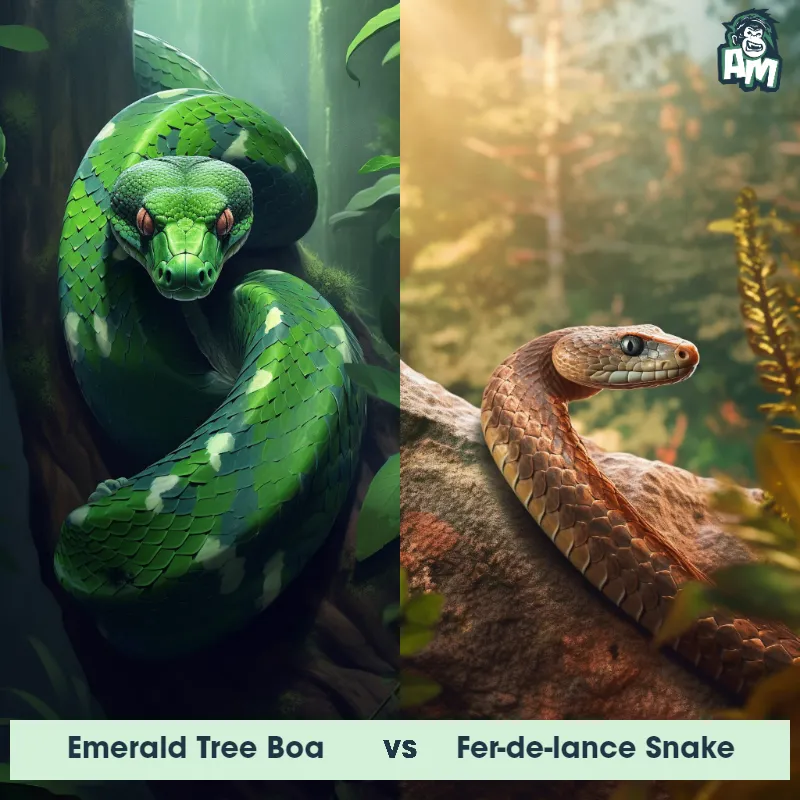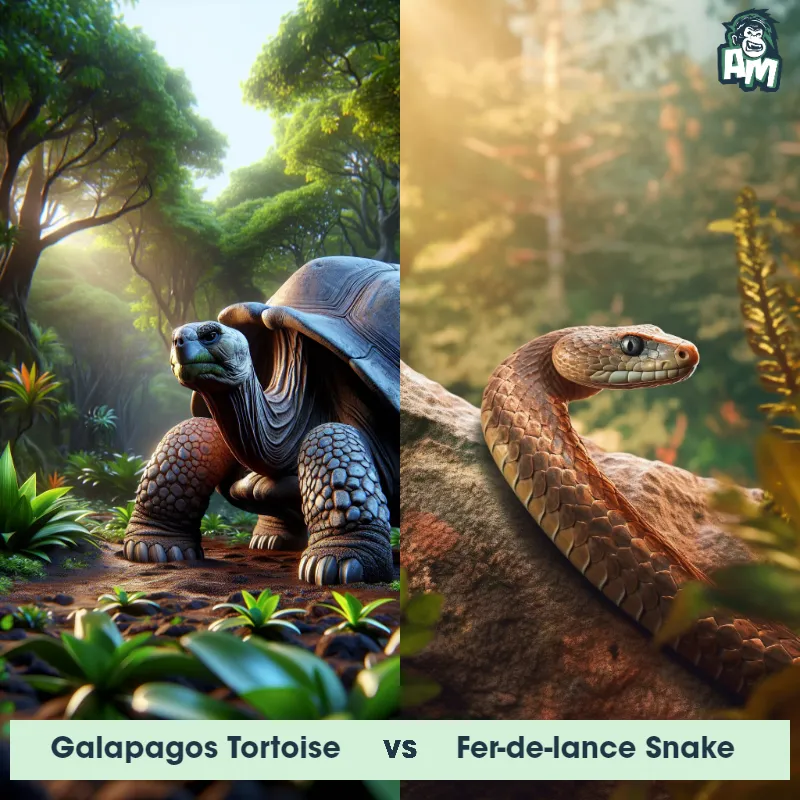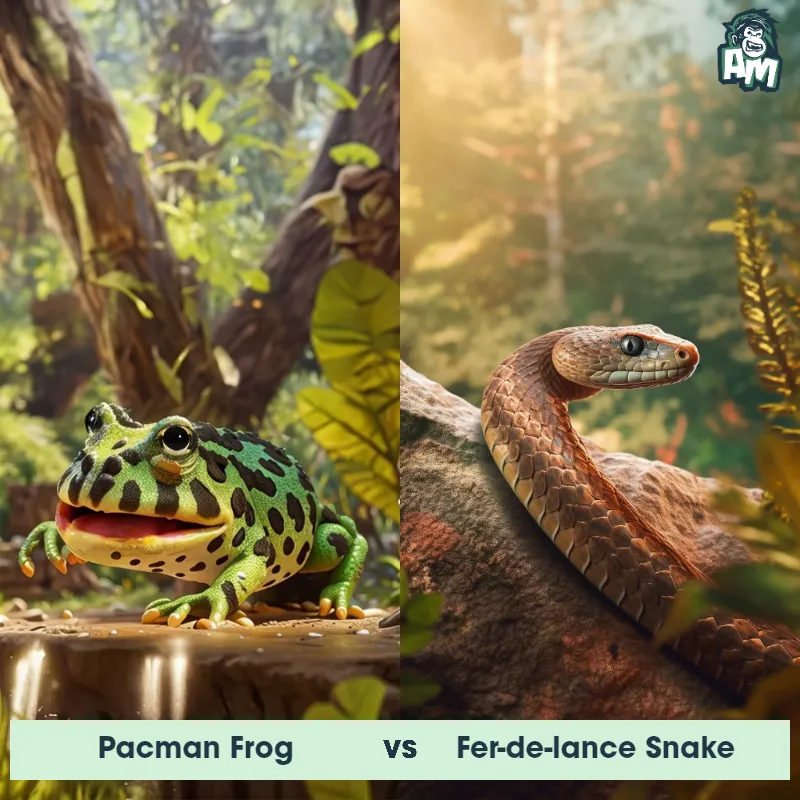The Fer-De-Lance Snake
The Fer-De-Lance Snake, also known as Bothrops asper, is a highly venomous snake species found in Central and South America. It is characterized by its large, thick body and can reach lengths of up to 7 feet. The snake's coloration varies, but it typically has a brown or green base color with darker patterns and a lighter belly. Its triangular-shaped head is distinct and equipped with two large fangs for injecting venom into its prey. The Fer-De-Lance Snake is known for its aggressive nature and is responsible for numerous snakebite incidents in its habitat.
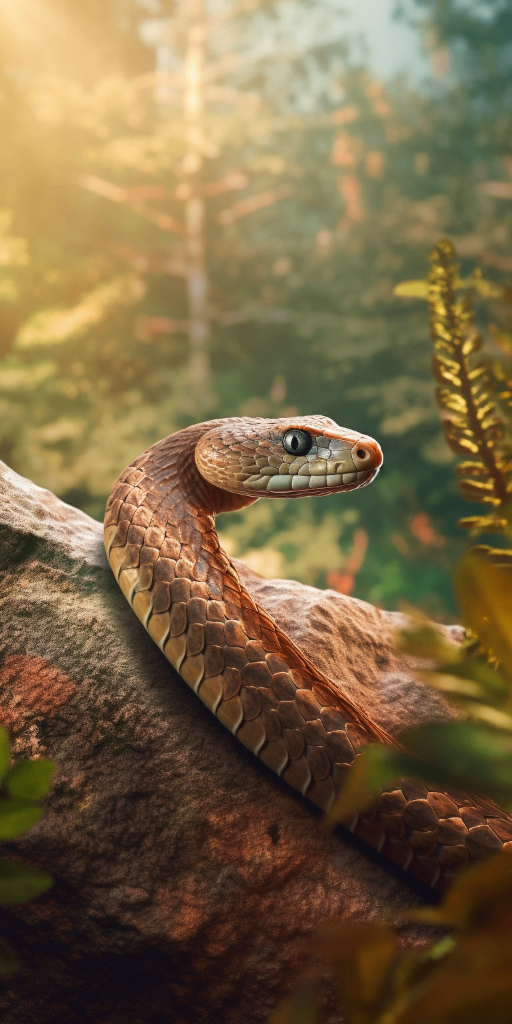
| Fer-De-Lance Snake | |
|---|---|
| Size | Up to 6 feet (1.8 meters) in length |
| Weight | Up to 10 pounds (4.5 kilograms) |
| Speed | Speed: 20 mph (32.19 km/hr) |
| Key Strength | Venomous bite |
| Biggest Weakness | Vulnerable to larger predators |
| Scientific Name | Bothrops asper |
| Family | Viperidae |
| Habitat | Forests, grasslands, and agricultural areas |
| Geography | Central and South America |
| Diet | Small mammals, birds, lizards, and other snakes |
| Lifespan | 8 years - 20 years |

The Fer-De-Lance Snake
The Fer-De-Lance Snake, also known as Bothrops asper, is a highly venomous snake species found in Central and South America. It is characterized by its large, thick body and can reach lengths of up to 7 feet. The snake's coloration varies, but it typically has a brown or green base color with darker patterns and a lighter belly. Its triangular-shaped head is distinct and equipped with two large fangs for injecting venom into its prey. The Fer-De-Lance Snake is known for its aggressive nature and is responsible for numerous snakebite incidents in its habitat.
Fun Fact: The Fer-De-Lance Snake is renowned for its extremely potent venom, which is a combination of hemotoxins and cytotoxins, capable of causing severe tissue damage and necrosis in its victims.
| Fer-De-Lance Snake | |
|---|---|
| Size | Up to 6 feet (1.8 meters) in length |
| Weight | Up to 10 pounds (4.5 kilograms) |
| Speed | Speed: 20 mph (32.19 km/hr) |
| Key Strength | Venomous bite |
| Biggest Weakness | Vulnerable to larger predators |
| Scientific Name | Bothrops asper |
| Family | Viperidae |
| Habitat | Forests, grasslands, and agricultural areas |
| Geography | Central and South America |
| Diet | Small mammals, birds, lizards, and other snakes |
| Lifespan | 8 years - 20 years |
Fer-De-Lance Snake Matchups
We use AI to simulate matchups between the Fer-De-Lance Snake and other animals. Our simulation considers size, strength, and natural predatory behaviors to determine the most likely outcome.
Fer-De-Lance Snake: Diet, Predators, Aggression, and Defensive Behaviors
What do Fer-De-Lance Snakes eat?
Fer-De-Lance Snakes are carnivorous and primarily feed on small mammals such as rodents, birds, and amphibians. They are also known to prey on other snakes, lizards, and even carrion. These snakes are ambush predators and use their excellent camouflage to stalk and strike their unsuspecting prey.
Do Fer-De-Lance Snakes have any predators?
While adult Fer-De-Lance Snakes do not have many predators due to their venomous nature and large size, they are sometimes preyed upon by birds of prey, large mammals like ocelots and coatis, and other snakes. However, their biggest threat is usually humans who often kill them out of fear or in defense of pets and livestock.
Are Fer-De-Lance Snakes aggressive?
Fer-De-Lance Snakes are known to be one of the most aggressive and territorial snake species. They have a reputation for being quick to strike when they feel threatened or cornered, and their venom is highly toxic. It is important to give these snakes a wide berth in the wild and avoid provoking them.
Do Fer-De-Lance Snakes fight?
Fer-De-Lance Snakes are solitary creatures and do not typically engage in physical combat with each other. However, they can be quite aggressive when defending their territory or during mating season. In these cases, they may engage in dominance displays such as wrestling or biting.
How do Fer-De-Lance Snakes defend themselves?
Fer-De-Lance Snakes have several defense mechanisms to protect themselves from predators and threats. Their first line of defense is their potent venom, which is delivered through long, hollow fangs when they bite. In addition to their venom, these snakes will also use their speed, camouflage, and aggressive behavior to deter potential threats.
What is the biggest weakness of Fer-De-Lance Snakes in a fight?
Despite being formidable predators, Fer-De-Lance Snakes have a vulnerability when it comes to larger predators or humans. Their aggressive nature and potent venom can make them dangerous, but they can be overpowered by larger animals like big cats or birds of prey. Additionally, their reliance on ambush tactics means they may struggle in a prolonged fight or when facing multiple attackers.
Fun Fact: As an ambush predator, the Fer-De-Lance Snake possesses a heat-sensitive organ located between its eyes and nostrils called the loreal pit, which aids in detecting the body heat of its prey.
Fun Fact: Unlike most snakes, the Fer-De-Lance Snake is an exceptional swimmer and can travel through water with relative ease, making it a versatile hunter in its environment.



